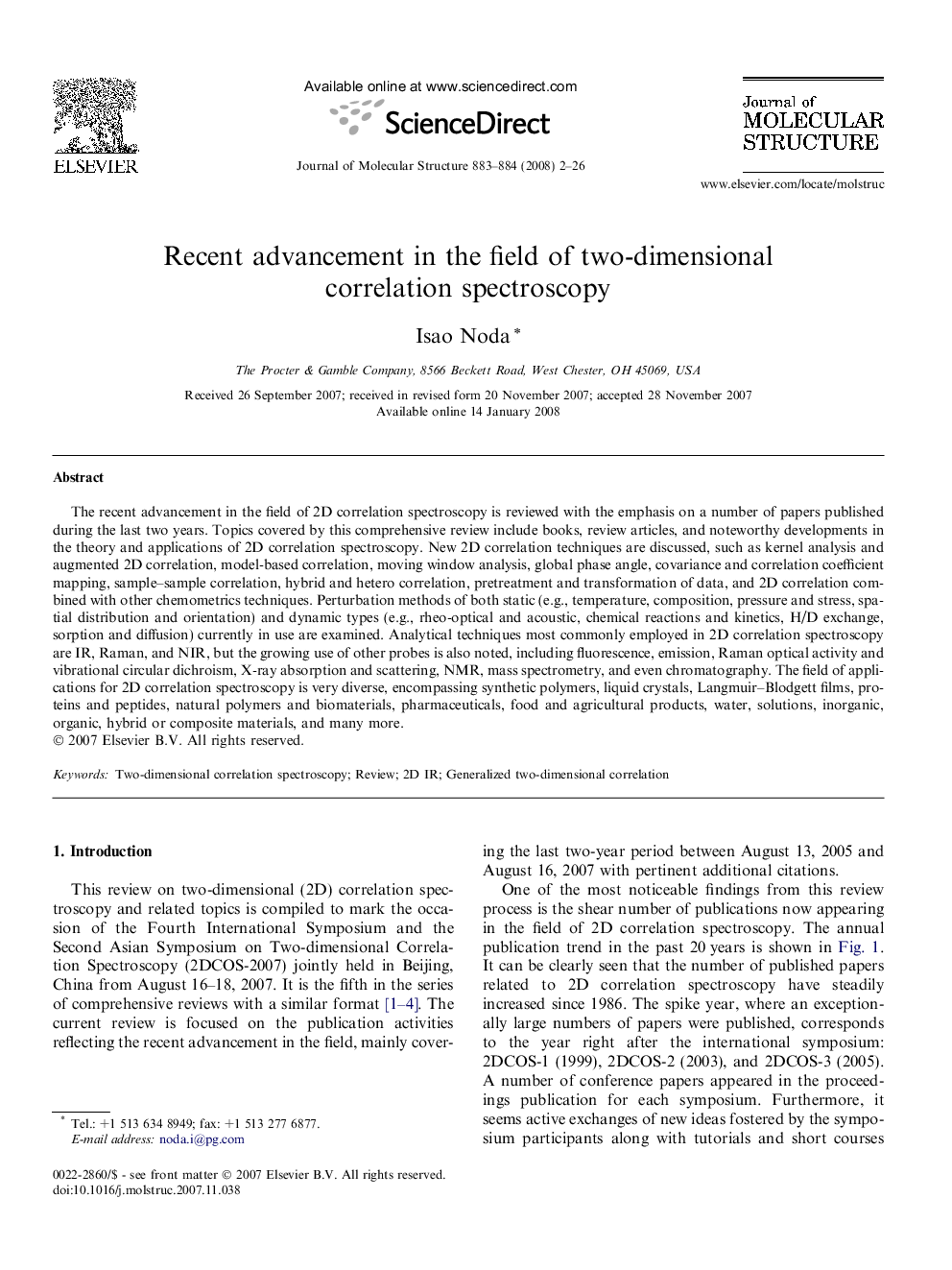| Article ID | Journal | Published Year | Pages | File Type |
|---|---|---|---|---|
| 1407297 | Journal of Molecular Structure | 2008 | 25 Pages |
The recent advancement in the field of 2D correlation spectroscopy is reviewed with the emphasis on a number of papers published during the last two years. Topics covered by this comprehensive review include books, review articles, and noteworthy developments in the theory and applications of 2D correlation spectroscopy. New 2D correlation techniques are discussed, such as kernel analysis and augmented 2D correlation, model-based correlation, moving window analysis, global phase angle, covariance and correlation coefficient mapping, sample–sample correlation, hybrid and hetero correlation, pretreatment and transformation of data, and 2D correlation combined with other chemometrics techniques. Perturbation methods of both static (e.g., temperature, composition, pressure and stress, spatial distribution and orientation) and dynamic types (e.g., rheo-optical and acoustic, chemical reactions and kinetics, H/D exchange, sorption and diffusion) currently in use are examined. Analytical techniques most commonly employed in 2D correlation spectroscopy are IR, Raman, and NIR, but the growing use of other probes is also noted, including fluorescence, emission, Raman optical activity and vibrational circular dichroism, X-ray absorption and scattering, NMR, mass spectrometry, and even chromatography. The field of applications for 2D correlation spectroscopy is very diverse, encompassing synthetic polymers, liquid crystals, Langmuir–Blodgett films, proteins and peptides, natural polymers and biomaterials, pharmaceuticals, food and agricultural products, water, solutions, inorganic, organic, hybrid or composite materials, and many more.
